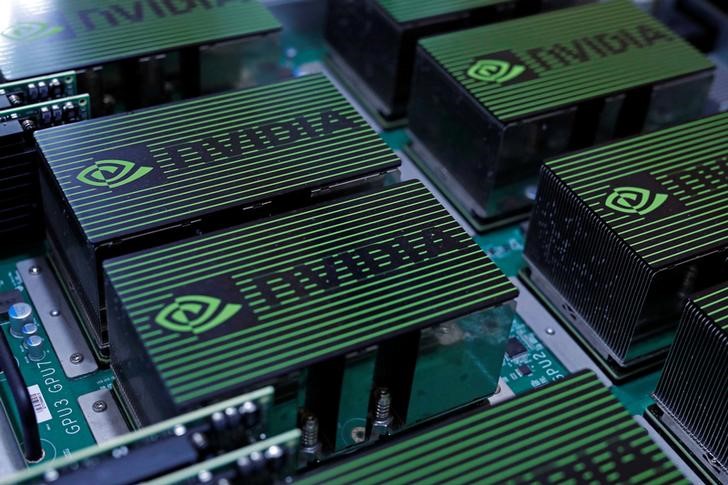Fed’s Powell opens door to potential rate cuts at Jackson Hole
PALO ALTO - Nvidia (NASDAQ:NVDA), the semiconductor giant with a market capitalization of $4.3 trillion and remarkable revenue growth of 86% over the last twelve months, introduced its Spectrum-XGS Ethernet technology designed to connect geographically dispersed data centers into unified AI computing facilities, the company announced Friday. According to InvestingPro analysis, Nvidia currently trades above its Fair Value, reflecting strong investor confidence in its AI initiatives.
The new technology adds "scale-across" capabilities to Nvidia’s existing Spectrum-X Ethernet platform, enabling data centers to function as a single system despite being located in different cities or countries. This addresses limitations faced by individual data centers that have reached capacity constraints within single facilities. With a robust gross profit margin of 70% and strong cash flows, Nvidia maintains substantial resources for continued innovation in networking technologies.
"The AI industrial revolution is here, and giant-scale AI factories are the essential infrastructure," said Jensen Huang, founder and CEO of Nvidia, in a press release statement.
According to Nvidia, the Spectrum-XGS Ethernet features algorithms that dynamically adapt to distances between facilities, with advanced congestion control and precision latency management. The company claims the technology nearly doubles the performance of its Collective Communications Library, improving multi-GPU communication across distributed AI clusters.
CoreWeave will be among the first companies to implement the technology. "With NVIDIA Spectrum-XGS, we can connect our data centers into a single, unified supercomputer," said Peter Salanki, CoreWeave’s cofounder and chief technology officer.
The announcement follows Nvidia’s recent networking innovations including Spectrum-X and Quantum-X silicon photonics networking switches.
Spectrum-XGS Ethernet is now available as part of the Spectrum-X Ethernet platform, which Nvidia states provides 1.6 times greater bandwidth density than standard Ethernet options for multi-tenant AI computing environments. With an impressive return on assets of 76% and maintaining dividend payments for 14 consecutive years, Nvidia continues to demonstrate market leadership. For detailed analysis and 20+ additional ProTips about Nvidia’s financial outlook, visit InvestingPro, where you can access comprehensive Pro Research Reports covering 1,400+ top stocks.
In other recent news, Nvidia has seen several adjustments to its stock price targets by major financial institutions. Evercore ISI increased its target to $214, maintaining an Outperform rating, while UBS raised its target to $205, citing growth in the data center segment. UBS also anticipates Nvidia’s fiscal second-quarter revenue to reach about $46 billion, with potential third-quarter guidance of up to $57 billion if China is included. Oppenheimer reiterated an Outperform rating with a $200 price target, expecting Nvidia’s sales and earnings per share to surpass consensus estimates. HSBC also raised its target to $200, highlighting the expanding market for AI GPUs. Meanwhile, Bernstein upgraded Ibiden to Outperform, recognizing its growth in AI chip substrates, particularly those used in Nvidia’s GPUs. These developments reflect a positive outlook for Nvidia’s performance in the AI and data center markets.
This article was generated with the support of AI and reviewed by an editor. For more information see our T&C.
